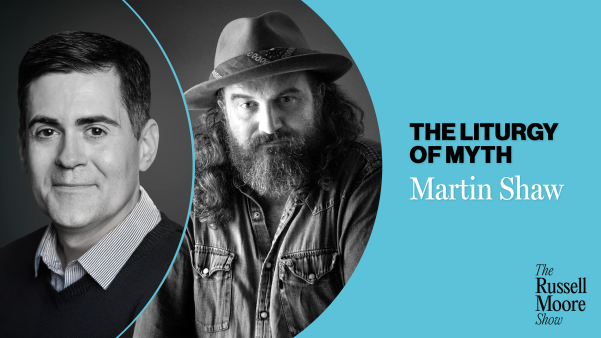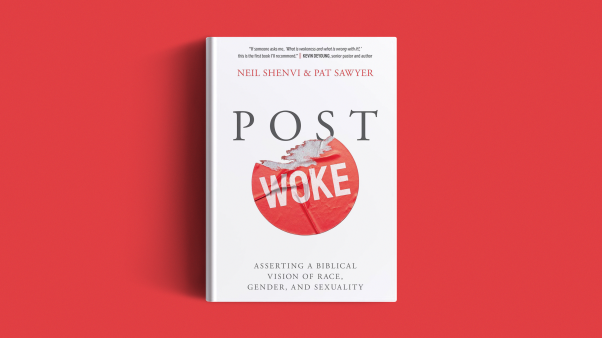Grace made personal.
In this era of the secular mass media, we are surrounded by celebrities created by the press and by prepackaged television personalities. Unfortunately, evangelicalism has also fallen prey to the celebrity syndrome of the communications industry. We read Christian best-sellers: first-person accounts by news-makers (sometimes coauthored or ghost-written); we watch and listen to the testimonies of sports stars and entertainers at televised evangelistic crusades; we make movies featuring great Christian personalities. These uses of the media can be quite valid means of spreading the good news to a general public accustomed to the ways of television and film; they can also encourage and teach pilgrims on the way to the Celestial City.
The celebrity syndrome is dangerously close to getting out of hand, however. We forget sometimes what it means to tell one’s individual story in the light of the theology of grace made personal. We also neglect the biblical teaching of imitation in the Christian life. Instead, through the media, we live vicariously the thrilling experiences of others and think that the Christian life should somehow be glamorous.
In the New Testament, particularly in Hebrews, we are called to fix our eyes on Jesus. Imitation is, first of all, to be of Christ. In order to persevere in the Christian life, we are also called to imitate the saints. The writer of Hebrews exhorts the struggling early Christian to show concern, not to be lazy, “but to imitate those who, through faith and patience, are inheriting the promise” (6:11–12, NEB). After citing the catalogue of saints in chapter 11, the writer concludes that once we realize we are surrounded by such a cloud of witnesses, we can proceed with the running of the race, gazing fixedly on Jesus. We are one with the saints, and we are comforted by their company. The hymn that we sing to a tune of Ralph Vaughn Williams catches the spirit of Hebrews:
For all the saints, who from their labors rest,
Who Thee by faith before the world confessed,
Thy name, O Jesus, be for ever blest.…
O blest communion, fellowship divine!
We feebly struggle, they in glory shine;
Yet all are one in Thee, for all are Thine.
Alleluia, alleluia!
We share a common struggle with the saints, and what attracts us about them is the story of their lives. Any life touched by an encounter with Jesus takes on an amazingly literary quality—it has a beginning, a middle, and an end. It becomes the plot of a story with meaningful form. Amos Wilder has admirably expressed this idea.
“A Christian can confess his faith wherever he is, and without his Bible, just by telling a story or series of stories. It is through the Christian story that God speaks, and all heaven and earth come into it. God is an active and purposeful God and his action with and for men has a beginning, a middle and an end like any good story. The life of a Christian is not like a dream shot through with visions and illuminations, but a pilgrimage, a race, in short, a history” (Early Christian Rhetoric, SCM Press, 1964, pp. 64–5).
Our personal lives take on the metaphor and outline of a story, too, but sometimes we need models to show us what the particular plot of our narrative is. The Church has always recognized this need, and within both the Catholic and Protestant traditions the literary genres of biography and autobiography have frequently provided exempla to believers. In the Middle Ages, for instance, saints’ lives became one of the most well-known narrative forms because of the appeal of these extraordinary biographies to the popular imagination. The Golden Legend, a collection of saints’ lives, was widely circulated and used as a source book by writers like Chaucer. Although the virtues and faith of the saints were stressed, the attention of the audience was frequently directed to the external events of the story—to the miracles and to the martyrdom of the life. Frequently this audience venerated the saint and his life because the narrative was cast in a form that directly paralleled the pattern of Christ’s life; in that case, the biblical doctrine of imitation was in danger of disappearing.
Although the Reformers rejected Catholic hagiography and dogma about the saints, in the post-Renaissance age the writing of spiritual biographies and, particularly, autobiographies, came into its own among Protestants. Reformation theology viewed the individual Christian as unique because called by God, yet as Everyman whose Christian life could be a valid example for other believers. Although the sense of the continuity of sainthood throughout the ages may have disappeared among Protestants in nonliturgical churches where the commemoration of the saints and martyrs and All Saints’ Day had been abolished with the liturgical calendar, these readers were able to gain a feeling for the martyrs of the Reformation and for the struggles of contemporary Christians.
Augustine had initiated the genre of autobiography with his Confessions, and subsequently the Catholic Church gained a series of important spiritual autobiographies, particularly from the religious orders stressing the inner life. Unlike the saints’ lives, which were official dogma, spiritual autobiographies constituted a continuous tradition of personal literature within the church. Protestants owing a debt to Augustine’s theology gave attention to his Confessions, but the seventeenth-century Puritans developed their own autobiographies, which usually followed a fixed pattern: “serious childhood, sinful youth, legal righteousness often preceded by a struggle, and final illumination” (L.D. Lerner, “Puritanism and the Spiritual Autobiography,” Hibbard Journal, 1957, p. 374). Many uneducated Puritans, including John Bunyan, wrote autobiographies in lieu of theology and affirmed their sainthood, or election, while sharing their dark night of the soul. Puritan autobiographies could include memoirs and journals, depending upon the degree of attention focused on the internal life of the writer and the sense of overall structure, but the majority of these works are of limited literary value.
Christians have continued to write autobiographies, but somehow twentieth-century readers know fewer and fewer of the great autobiographies of the past. These works are the very ones that can form our taste and give us standards by which to judge the plethora of attractively packaged books with glossy photographs that are currently being produced on the religious book market. The great spiritual autobiographies attract us by their simple ring of human truth in which we recognize our own humanity and see I the possibility that we, too, might be touched by grace. They lead us through the refining crucible from which the qualities of sainthood emerge. Karl Olsson’s observations in another context also apply here. “The saints encourage us and comfort and urge me on, not by the wagging of their fingers but by modeling their own mortality” (Come to the Party, Word, 1972, pp. 134–5).
Human truth alone will not make a Christian autobiography great reading; that truth has to be cast in the language and form of literature. Although anchored in the writer’s perception of fact and of inner experience, a great autobiography takes on the appearance of imaginative narrative. There is a sense of structure and pattern to the life. And in Christian autobiographies, the patterning is drawn from the archetypes and images of the Bible—from narratives like the parable of the prodigal son, or from the events of Christ’s life, or from images like the pilgrimage of life. The meaning that directs the writer’s choice of form is from such biblical doctrines as redemption, grace, providence, and the sovereignty of God. The autobiographer may draw a truth from experience, but his basic concern is not to preach, so meaning is often implied through metaphors and imagery. The style of great autobiographies is never dated. The life we read about is memorable as much for the striking way it is told as for the pattern of its story.
The autobiographer claims to tell the truth in a unique way. What matters is the inner person of memory, imagination, feeling, and soul. Characters and events are always filtered through the personal vision and recollection of the writer; the truth of autobiography is essentially the truth of inner experience. There may be errors in the recounting of external events, but we gain instead a sense of the continuity of the self. As an outsider, the reader of the autobiography is put in the unique position of both sharing in the life of the writer and distinguishing his degree of self-awareness and maturity. We become aware of the writer’s idiosyncratic point of view and we can learn from even the marks of human limitation. At the same time, the validity of the autobiographer’s experiences can be checked against Scripture. The tremendous paradox of the Christian autobiography is that the writer refuses to claim that he is different from any other Christian touched by grace even as he describes his unique experience. This attitude is in sharp contrast with the claims of many secular autobiographers, particularly from Rousseau on, who see themselves as unique and unlike any other human being.
A final quality of great spiritual autobiographies is the grace with which they conclude. The story always ends at the point where the writer comes to terms with God, with himself, with his purpose in life, or with a higher and fuller level of living. Counter to our expectations, the conclusions of Christian autobiographies are not predictable. Where, when, and how the story ends depends in part on the author’s artistry and on his age at the time of writing. Conversion may constitute the conclusion of the book, or it may be a dramatic peak in a story that leads to a special calling or vocation. In any case, the ending leaves the reader at a point of stasis when the writer senses that integration has occurred in his life.
A glimpse at four representative spiritual autobiographies will illustrate the qualities for which we should be looking in our reading. These particular works are diverse, but they are drawn together by their archetypal motifs from biblical material. Augustine wrote his Confessions around A.D. 400, fourteen years after his conversion and four years after he had become bishop of Hippo. Books one to ten constitute his personal conversion story in which everything leads to the dramatic moment of illumination and change described in book eight. Augustine’s perspective in time as he reconstitutes his life allows him to see God’s pattern of grace. He shows us a number of stages that prepared the way for his conversion, and he makes these phases vivid by narrating concrete incidents to highlight them. As a nineteen-year-old student in Carthage he was stirred by his reading of Cicero and undertook the study of philosophy and the search of truth; subsequently, Augustine’s ambition was frequently at odds with his higher goal, but in retrospect he can comment: “I had begun that journey upwards by which I was to return to you” (F. J. Sheed translation, Sheed and Ward, 1942, p. 38). Augustine rejected the Christian faith as too unphilosophical and became enamored with Manicheanism, but that only led to disillusionment when he realized how second-rate Manichean experts were as intellectuals. Drawn toward skepticism next, Augustine went to Rome when he was about twenty-eight. When he heard Ambrose, he could only exclaim “how truly he spoke.” Ambrose’s intellectual superiority shook Augustine’s prejudice against Christianity, but he was still troubled by problems such as the nature and origin of evil. He began to examine Scripture and gained respect for the Catholic position, which called for faith where proof was impossible. Continuously troubled by lust and a sense of wretchedness, Augustine then turned to mystical Neoplatonism. When that did not satisfy, he finally discovered the Pauline teaching of grace and the reality of Jesus as mediator.
The drama of Augustine’s conversion once his heart and mind are prepared is hard to match in fiction, as when he describes his wretchedness as he sits in a garden in Milan. “And suddenly I heard a voice from some nearby house, a boy’s voice or a girl’s voice, I do not know: but it was a sort of sing-song, repeated again and again, ‘Take and read, take and read’ ” (p. 146). Augustine thinks that it must be a childish game, but then decides it is a divine command. He opens the Bible to Romans 13:14: “But put ye on the Lord Jesus Christ, and make not provision for the flesh, to fulfill the lusts thereof.” “I had no wish to read further, and no need. For in that instant, with the very ending of the sentence, it was as though a light of utter confidence shone in all my heart, and all the darkness of uncertainty vanished away” (p. 146).
On one level, this story follows the biblical pattern of the return of the prodigal son. While Augustine’s mother Monica prays, God extends his grace and draws the restless intellectual to him. Augustine’s originality as a writer, however, transforms this archetypal motif into a distinctive literary work of psychological depth. The story is in the form of a confession and is addressed to both God and the reader, but as he writes, Augustine is striving to explore his inner being. No other writer before him in the Western tradition had ever used the first-person narrative in this way, and Augustine opens the way for the psychological exploration of the self in later literature precisely because of his Christian concept of the inner man. “What nature am I? A life powerfully various and manifold and immeasurable. In the innumerable fields and dens and caverns of my memory … in and through these does my mind range, and I move swiftly from one to another and I penetrate them as deeply as I can, but find no end” (p. 186). Augustine draws himself in all his complexity and with all his contradictory motives, and we empathize with him. As we lay his autobiography down, we take with us the personality of the man who, as bishop, is still being purified.
At the insistence of her spiritual directors. Saint Teresa of Avila wrote her Life between 1562 and 1565; she never intended it for the general public, but it equals Augustine’s Confessions (which she had read) as a record of a great soul. Teresa lived until 1582, so her account does not cover most of her activities in reforming the Carmelite order in Spain, although she does describe the foundation of the first reformed convent of St. Joseph and the opposition by religious authorities and others to her appeal to follow radically the call to poverty and obedience. This energetic, intelligent, and witty woman traveled throughout Spain promoting the Carmelite reform after having spent her younger years totally within the convent. Her Life is remarkable for its analysis of the nature of the mystic experience in an unorthodox, spontaneous style (a direct reflection of her personality), complete with asides, exclamations, and colloquialisms. She writes because she has been asked to, and she is fully aware of the limitations of her memory and the demands on her time. “Only those who have commanded me to write this know that I am doing so, and at the moment they are not here. I am almost stealing the time for writing, and that with great difficulty, for it hinders me from spinning and I am living in a poor house and have numerous things to do. If the Lord had given me more ability, and a better memory, I might have profited by what I have heard or read, but I have little ability or memory of my own. If, then, I say any good thing, it will be because the Lord has been pleased, for some good purpose, that I should say it, while whatever is bad is my own work and Your Reverence will delete it” (E. Allison Peers translation, Doubleday-Image, 1960, p. 123).
Teresa also creates a compelling story of her inner turmoil as a young nun. She discovered inner prayer early in her convent life but then fell into a lukewarm spiritual state for fifteen years. “My life became full of trials, because by means of prayer I learned more and more about my faults. On the one hand, God was calling me. On the other, I was following the world.… I could not, therefore, shut myself up within myself (the procedure in which consisted my whole method of prayer) without at the same time shutting in a thousand vanities. I spent many years in this way, and now I am amazed that a person could have gone on for so long without giving up either the one or the other” (p. 105).
This narrative reveals a movement toward both submission and maturity. The initial conflict within Teresa between worldliness and singleminded devotion to Christ was next succeeded by intense insecurity and fear as Teresa began to experience her initial mystic visions; her insecurity was by no means lessened by the degree of opposition and doubt as to the validity of her mystic states she encountered within the church. Finally, after two years of testing during which she began to experience actual union with Christ, a turning point came in about 1558. Teresa was able to recognize her unique selfhood and decided to let God speak to her in whatever way he would choose. “I realized that I was completely different; so I put myself into God’s hands, for I could do nothing else: He knew what was good for me and it was for Him to fulfil his will in me in all Things” (p. 248). Soon after this she experienced a state of mystic rapture during which Christ freed her from fear. From this divine revelation Teresa draws a truth that is applicable for all believers as she addresses the reader. “Reflect—for this is the truth—that to those who give up everything for Him God gives Himself. He is not a respecter of persons. He loves us all; no one, however wicked, can be excluded from His love since he has dealt in such a way with me and brought me to so high a state” (pp. 253–4).
As the reader proceeds toward the end of the Life, he finds Teresa gaining the courage and inner serenity that free her energies to undertake the reform of the Carmelite order and to accept the call to a simple life. The road she travels—the road of mysticism and the way of poverty—is neither narrow nor hard. Teresa borrows wonderful biblical imagery (perhaps from Isaiah 35:8–10) to describe a royal, broad path of freedom from fear and of total submission, which is her final perspective as she concludes her story. “As I am now out of the world, and my companions are few and saintly, I look down upon the world as from above and care very little what people say or what is known about me.… My soul has been awakened by the Lord from a condition in which I used to feel as I did because I was neither mortified nor dead to the things of the world; and His Majesty will not let me become blind again” (p. 397).
John Woolman, the eighteenth-century American Quaker, would have shared Teresa’s interest in the inner life and in an outer life of simplicity, but how different his religious heritage is as an American heir of Pietism and Puritanism. He had read a number of journals by itinerant ministers when he began writing his journal about 1756, but as a largely self-educated man he had also studied Thomas à Kempis, William Law, and Jakob Boehme. The journal is not private; Woolman wrote it intermittently for the rest of his life, intending it for an audience and even recopying parts of it. “I have often felt a motion of love to leave some hints in writing of my experience of the goodness of God, and now, in the thirty-sixth year of my age, I begin this work” (Phillips P. Moulton edition, Oxford University Press, 1971, p. 23). The narrative is not continuous and the language is straightforward, but the reader is drawn into a compelling story of the awakening of the social conscience of an evangelical. Woolman no doubt intended that the reader examine his own values, too, and he draws our attention toward key events in his life that demonstrate either his struggles to live in accord with his conscience or his method of confronting people directly to put personal wrongs right or to stir their consciences, particularly on the condition of the Negro slaves. When Woolman was in his early twenties, his employer asked him to write a bill of sale for a Negro woman while her buyer waited. “The thing was sudden, and though the thoughts of writing an instrument of slavery for one of my fellow creatures felt uneasy, yet I remembered I was hired by the year, that it was an elderly man. a member of our Society, who bought her; sc through weakness I gave way and wrote it, but at the executing it, I was so afflicted in my mind that I said before my master and the Friend that I believed slavekeeping to be a practice inconsistent with the Christian religion” (p. 33). After this incident, Woolman’s policy is to ask to be excused from any action to which his conscience objects.
Woolman begins his journal with the story of his early religious inclinations, his adolescent waywardness, and the final change of his heart as a young man, but his major concern is how to reflect his inner state in the values of his active, external life. His early sensitivity to the unjustness of slavery was soon followed by a desire to live simply and to resist materialism. He decided to intentionally limit his income by remaining a tailor. “I saw that a humble man with the blessing of the Lord might live on a little.… There was a care on my mind to so pass my time as to things outward that nothing might hinder me from the most steady attention to the voice of the True Shepherd” (p. 35).
Woolman made numerous trips as a Quaker-recommended minister, but his first journey really awakened his sensitivity to the eventual destructiveness of slavery to America as well as to the individuals involved. From then on, the die was cast, and he engaged in social action by confronting prosperous Quaker slave-holders, addressing yearly meetings of the Friends, and refusing to write wills involving slaves. “Deep-rooted customs, though wrong, are not easily altered, but it is the duty of everyone to be firm in that which they certainly know is right for them” (p. 50). Sympathy with the Negroes as souls “for whom Christ died” led Woolman toward identifying with the Indians, whom he visited on a trip to Pennsylvania, and with seamen and oppressed workers on his final trip to England. Those were not easy times; England and France were at war, and Woolman struggled with the pacifist issue, refusing to pay taxes that were directed toward the war.
The most sustained narrative in the entire journal is Woolman’s account of the voyage that he took to England, which ended in his death by smallpox in 1772. Woolman endures the hardships of living in the steerage because that is in accord with his values, identifies with the hard life of the seamen, survives storms with deep serenity, and feels a renewed call to forsake worldly treasures and speak up for the oppressed. While on the voyage, he discusses the nature of true love with respect to the parable of the good Samaritan. That biblical motif summarizes the essence of Woolman’s own life. “In this love we can say that Jesus is the Lord, and the reformation in our souls, manifested in a full reformation of our lives, wherein all things are new and all things are of God” (p. 177).
C.S. Lewis’s graceful style in Surprised by Joy (1955) could hardly be farther removed from Woolman’s straightforwardness. As the story of his intellectual evolution as a young man and his inevitable move toward a conversion experience, Lewis’s book parallels Augustine’s work. The pattern here, however, is of paradise lost and regained, though regained in altered form, and Lewis covers the years 1898 to 1931 after his academic career at Oxford was becoming established, but well before his general recognition as a writer. Lewis’s perspective is that of a well-known Christian figure, in that there are allusions to his other writings and that his personal intellectual history clarifies certain of his interests as a mature scholar.
Paradise is an ideal known in childhood, which gradually passes out of Lewis’s experience as a young intellectual, but which always haunts him. A motherless boy who was also estranged from his father, Lewis very early experienced fleeting moments of joy when he was drawn into an imaginative world of great beauty. “Once in those very early days my brother brought into the nursery the lid of a biscuit tin which he had covered with moss and garnished with twigs and flowers so to make it a toy garden or a toy forest. That was the first beauty I ever knew” (Collins-Fontana, 1966, p. 12). Joy was the trace that the ideal left in Lewis’s emotional being; like Novalis, Wordsworth, and other Romantics, he came to yearn for that ideal and to live for that stab of joy.
While at “Oldie’s” boarding school, Lewis lost joy in his generally unhappy experience there, but he regained it later at preparatory school. Now, however, joy became part of a secret interior life that was quite distinct from Lewis’s intellectual concerns. What was actually happening—and this the reader discerns at the end of the autobiography and then projects back onto the earlier material—was the gradual extinction of an innate spiritual sensitivity to a higher level of reality that Lewis had as a child. (His experiences of joy are akin to Wordsworth’s “intimations of immortality” in the child.) Even as Lewis found an ideal world in Wagner’s versions of the old myths, medieval romances, and the Eddas, joy was becoming a rarer and rarer experience. The extinction of spiritual sensitivity also accompanied Lewis’s rejection of Christianity, his development into an intellectual prig, and his evolution toward increasing pessimism. All this was relieved only by his friendship with Arthur, a soul-brother who also knew joy, and his encounter with two great teachers.
The nadir in Lewis’s story is finally reached in the chapter “Check.” Joy has disappeared, and pleasure is a poor substitute. “Such, then, was my position: to care for almost nothing but the gods and heroes, the garden of the Hesperides, Launcelot and the Grail, and to believe in nothing, but atoms and evolution and military service. At times the strain was severe, but 1 think this was a wholesome severity” (p. 140). The turning point comes not long after when Lewis begins to understand what joy really is. The reading of MacDonald’s Phantastes leads him to sense that the barrier to joy may well be something within himself.
Once at Oxford, Lewis tried to reform himself (“The New Look”), but that failed. Then everything turned “against” him and his resistance to belief. Through Owen Barfield and others, he accepted the existence of the supernatural; then he moved to Idealism. He read George Herbert and Chesterton and met Christians like Tolkien. All moves rapidly to the dánouement.
Lewis comes to see that the paradise he had been seeking was a false one. “I perceived (and this was a wonder of wonders) that just as I had been wrong in supposing that I really desired the Garden of the Hesperides, so also I had been equally wrong in supposing that I desired Joy itself’ (p. 176). Joy turns out to have been a pointer to God. As inexorably as in the case of Augustine, grace has drawn Lewis toward a vision of the legion that is his true sinful self and to the acceptance of a theistic belief as “the most dejected and reluctant convert in all England” (p. 182). When Lewis finally believes in Christ, it is just as dramatic an event as Augustine’s final illumination, but in a quieter way. “I was driven to Whipsnade one sunny morning. When we set out I did not believe that Jesus Christ is the Son of God, and when we reached the zoo I did. Yet I had not exactly spent the journey in thought. Nor in great emotion … It was more like when a man, after a long sleep, still lying motionless in bed, becomes aware that he is now awake” (p. 189).
These four autobiographers set high standards in story telling. They were extraordinarily gifted people, with minds at one time analytic and metaphoric. And that is the challenge of writing spiritual autobiographies: to maintain a delicate balance between the probing of mind and memory as they dissect the past and the concrete, imaginative leap of the literary pulse. The personality of all four persons controls the form and style of their works, which are as translucent as their souls. These autobiographers challenge us to seek those standards in writing and reading that last, to take courage from true sainthood, and to recall that we are creating daily our own spiritual auttobiographies.
D. Bruce Lockerbie is chairman of the Fine Arts department at The Stony Brook School, Stony Brook, New York. This article is taken from his 1976 lectures on Christian Life and Thought, delivered at Conservative Baptist Theological Seminary in Denver, Colorado.









